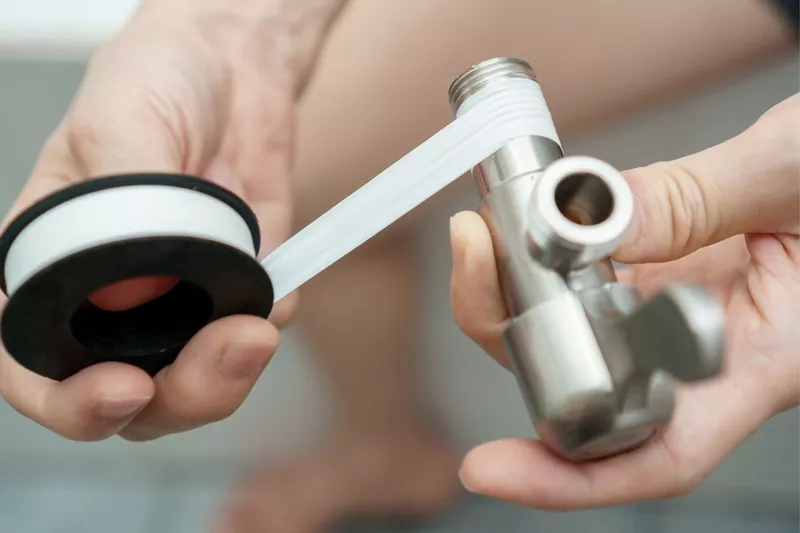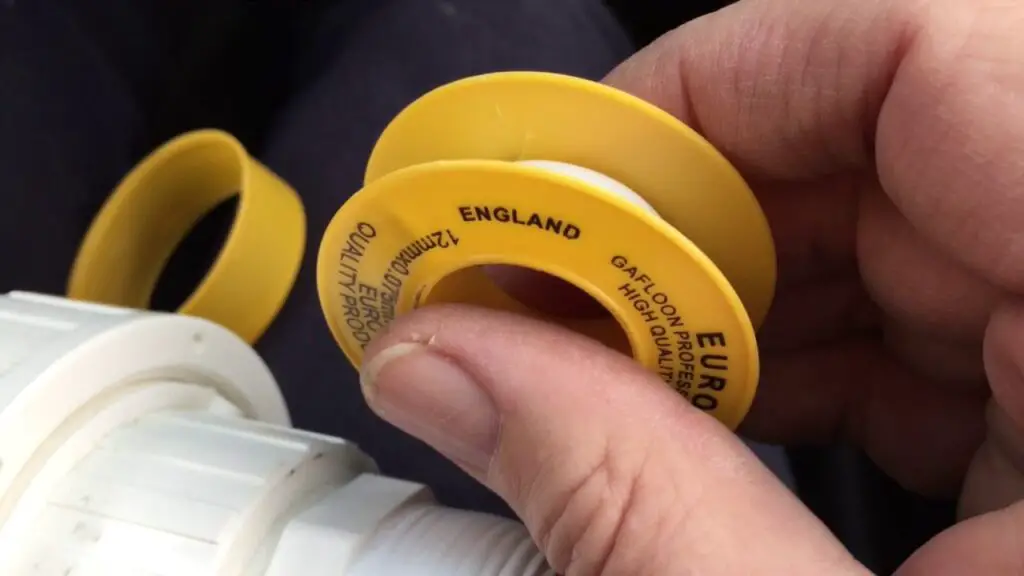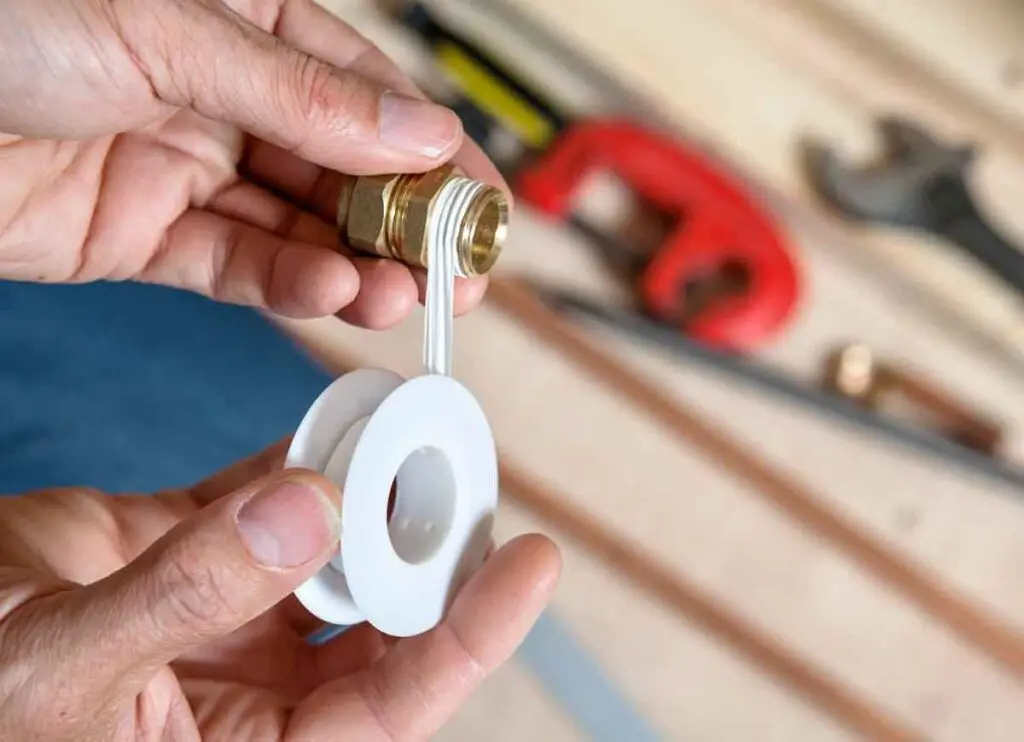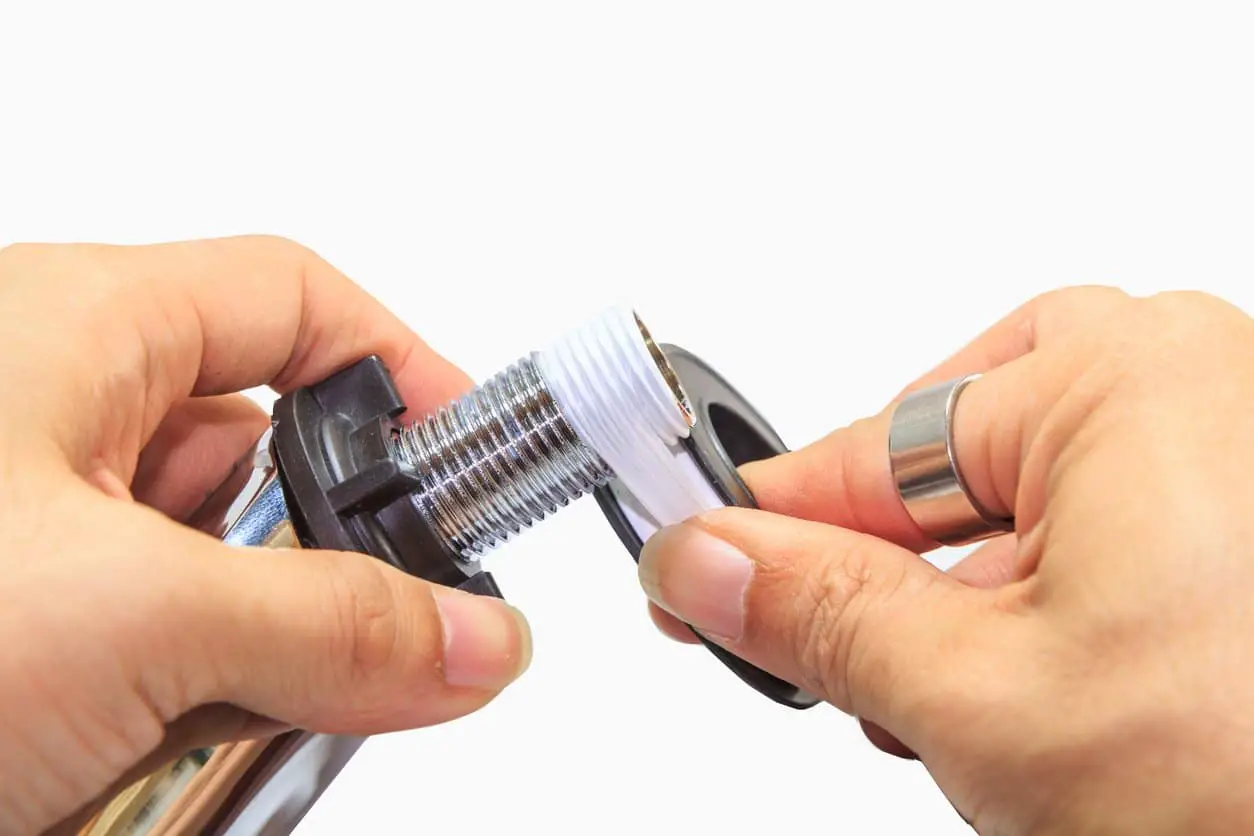How Much Plumbing Tape To Use
Introduction
How Much Plumbing Tape To Use: Plumbing tape, often called thread seal glue or plumber’s tape, is a multipurpose tool used to seal up plumbing lines and prevent water leaks. Commonly used for securing threaded pipe connections, it is a thin, flexible strip produced from materials like PTFE (polytetrafluoroethylene).
When it comes to determining how much plumbing tape to use, there are several factors to consider. The most important factor is the size and type of the threaded connection you are working with. Plumbing tape is typically applied to the threaded male end of a pipe or fitting before it is screwed into the corresponding female threaded connection.
For smaller connections, such as those found in household plumbing fixtures like faucets or shower heads, a few wraps of tape around the male threads are usually sufficient. The tape should be wrapped in the direction opposite to the direction of the thread to ensure it doesn’t unravel when the connection is tightened.
Greater quantities of plumbing tape are typically needed to effectively seal bigger pipe sizes found in industrial and commercial plumbing systems. The tape should be wrapped around the male threads multiple times to ensure that the entire threaded area is protected.

How many times do you wrap plumber’s tape?
The thread seal tape will go around the pipe depending on the thickness of the tape, but for the standard variety, about five or six wraps should be enough for the job.When applying plumber’s tape, the number of times you wrap it around the threads depends on the size and type of the threaded connection. The goal is to create a secure seal that prevents leaks without using an excessive amount of tape. While there is no fixed rule for the exact number of wraps, certain guidelines can help determine the appropriate amount.
To prevent the tape from calming down after the two parts is screwed together, remember to twist it counterclockwise around the thread. This is especially important when securing smaller connections, such as those found in faucets and shower heads, where a leak-proof seal must be produced without impeding the connection as it is getting tightened.
More wraps of tape for plumbers are often necessary for bigger plumbing use, such as commercial or business plumbing with thicker pipe diameters. To ensure complete covering of the threaded area, the tape should be wrapped round the male threads three to five times. This double-layer seal is stronger, so it can endure greater pressure without leaking.
Can you use too much pipe tape?
NPT pipe is tapered. As a result the more you tighten the joints the better the seal. Using too many layers of tape only gets in the way of the seal and reduces its effectiveness. There is a possibility for a leak path between each and every layer of tape. Firstly, using too much pipe tape can prevent proper tightening of the connection. The excess tape can create a barrier between the threads, making it challenging to achieve a secure fit. As a result, the connection may not be tightened sufficiently, leading to potential leaks.
When the pipe connection is tightened, too much tape can protrude into the pipe. As a result, the plumbing system may become less effective as water or other fluids have more difficulty moving through the pipe. There is a risk that the tape will separate, causing more blockages.
If you use too much pipe tape, you may have trouble removing the fitting in the future. During disassembly, the excess tape could become entangled or stuck, causing more work and perhaps damage the threaded parts.
To ensure a proper seal and avoid these issues, it is important to use an appropriate amount of pipe tape. Following the manufacturer’s recommendations or consulting a professional plumber can help determine the right amount for your specific application.
Can too much plumber’s tape cause a leak?
Properly applied to a threaded pipe joint, Teflon tape prevents leaks. However, if improperly applied, then yes, it can cause leaks. The most common mistake is to use too much tape. A too-thick application of tape in the joint can prevent full tightening of the threaded joint; a leak results.
But there are other problems that might arise from applying too much plumber’s tape. For instance, if too much tape is applied, it may prevent the connection from being tightened properly. The threads may not fully engage due to the extra tape, which could lead to a leaky connection. Even using plumber’s tape, appropriate tightening of the connection is essential.
Additionally, if the excess tape protrudes into the pipe when the connection is tightened, it can potentially cause flow restrictions or blockages, which can affect the performance of the plumbing system.
To avoid such problems, it is recommended to apply plumber’s tape in the appropriate amount. Generally, a few wraps of tape around the male threads are sufficient for smaller connections, while larger connections may require multiple wraps to ensure a secure seal. Following the manufacturer’s guidelines or seeking advice from a professional plumber can help determine the right amount of tape to use for your specific application.
How long does plumbing tape last?
Silicone tape can help form a temporary waterproof seal and prevent water from leaking until you replace the pipe. How Long Does Pipe Leak Tape Last? Pipe thread tape can last for years. As long as the joint isn’t leaking, you can consider it a long-term solution.
Plumbing tape, also known as thread seal tape or plumber’s tape, is designed to provide a reliable seal and prevent leaks in threaded pipe connections. The longevity of plumbing tape can vary depending on several factors:
Material Quality
The quality of the plumbing tape material plays a significant role in its durability. Higher-quality tapes, typically made of PTFE (polytetrafluoroethylene), tend to last longer and offer better resistance to chemicals, moisture, and temperature changes.
Environmental Factors
The conditions in which the plumbing tape is exposed can affect its lifespan. Extreme temperatures, moisture, chemicals, and UV exposure can potentially degrade the tape over time. Harsh environments may shorten its lifespan compared to more controlled indoor applications.
Usage and Handling
The installation and upkeep of plumbing tape might affect its durability. Preventing excessive torque or damage during installation or repairs, as well as applying the tape carefully, might increase its service life.
Plumbing tape lasts a good amount of time—usually around a few years. However, the tape should be changed every time a link is removed apart and returned back together. Paper can lose its stickiness, stretch, or even get sick after being used a lot.

Is plumber’s tape enough?
Most threaded connections without a built-in rubber seal can be sealed with plumber’s tape. The threads are lubricated, the connection is more secure, and the pipes don’t get stuck when you disassemble the joint. Often called thread seal tape or PTFE tape, is used to make sure that threaded pipe connections are completely watertight. Plumber’s tape works well in many situations, but it isn’t always enough.
Plumber’s tape is primarily designed to prevent leaks by filling. In the gaps between the threads of the pipe and fitting, creating a tight seal. It helps lubricate the connection, allowing for easier tightening and preventing the threads from binding or seizing.
However, there are situations where plumber’s tape alone may not be enough to ensure a reliable seal. Factors such as the condition of the pipe and fittings, the type of material being connected and the pressure or temperature of the system can influence the effectiveness of the seal.
There may be circumstances where additional sealing procedures or materials are required. Plumber’s tape and pipe grease (thread sealant compound) may be used together. To provide a more reliable seal. Especially in high-pressure systems or when joining pipes made of certain materials like stainless steel.
When deciding on the most suitable sealing method for a certain application. Tt is essential to adhere to manufacturer instructions and standard industry norms. To make sure the connection holds and doesn’t leak. It’s a good idea to consult a plumber or plumbing codes and standards.
Are there different types of plumbing tape?
Several varieties of plumbing tape exist, and the answer is yes. Although PTFE (polytetrafluoroethylene) tape is the most popular, there are several types available for different purposes and connections. Such as gas lines and thicker thread seal tape for bigger connections. There are a number of variations on plumbing tape to meet a wide range of needs. Polytetrafluoroethylene (PTFE) plumbing tape is extremely prevalent since it is a non-stick, long-lasting material that also seals very well.
It’s important to select the appropriate type of plumbing tape based on the specific application. Pipe material, size and pressure requirements. Following manufacturer recommendations and consulting professional plumbers can help in choosing the right type of tape for your plumbing needs.
Also, plumbing tape isn’t the only way to seal something. Other choices include certain compounds and thread sealants. You can make a strong seal on the threads by applying these chemicals, which come in liquid or paste form. In tough or high-pressure conditions, they might offer better sealing abilities.
Can plumbing tape be used for all threaded connections?
Most of the time, plumbing tape is used to join lines and fittings with curved threads. Like those used in plumbing systems. Straight threads and compression fits are two other types of threaded links that might not work with it. It’s also known as thread seal duct tape or plumber’s tape. Plumbing tape is mostly used to connect pipes with bent threads. A lot of the time, these are used in plumbing for things like water lines, faucets, shower heads, and more.
Plumbing tape is not suitable for all types of threaded connections. It is specifically designed to create a seal in tapered threads by filling. The gaps between the male and female threads, preventing leaks. However, other types of threaded connections may require different sealing methods.
For example, straight threads, which have parallel threads that do not taper, typically require thread sealants in the form of compounds or pastes instead of plumber’s tape. These sealants are applied to the threads before assembly to create a reliable seal.
Compression fittings, which use a compression nut and ferrule to create a watertight seal, do not typically require plumber’s tape. Instead, they rely on the compression of the ferrule against the pipe or fitting to create a secure connection.
Should I consult a professional for guidance on plumbing tape usage?
If you’re unsure about the appropriate amount of plumbing tape to use for a specific application, it’s always a good idea to consult a professional plumber. They can provide expert advice based on their experience and ensure the correct application of plumbing tape for optimal results.
Consulting a professional plumber for guidance on plumbing tape usage can be beneficial, especially if you are uncertain about the appropriate application or if you have complex plumbing needs. Here are a few reasons why seeking professional advice can be helpful:
Expertise and Experience
Professional plumbers have extensive knowledge and experience working with various plumbing systems and materials. They are familiar with different types of plumbing tape, their applications, and best practices for achieving effective seals. Their expertise can help ensure that you use the right type and amount of tape for your specific situation.
Code Compliance
Plumbers know all the rules and codes that apply to plumbing in their area. They can make sure that the way you use plumbing tape is in line with the rules and standards that apply. Following the rules is very important for keeping things safe, stopping leaks, and staying out of trouble with the law.
Complex or Specialized Applications
It is strongly suggested that you talk to a professional plumber if you have complicated or unique plumbing needs, including high-pressure systems, gas lines, or pipes made of unusual materials. These professionals can look at your unique needs and suggest the best ways to seal things, which might not just include plumbing tape.
Troubleshooting and Problem-Solving
Plumbers know how to find possible problems and fix issues that are caused by leaks, bad connections, or not enough sealing. They can give you useful advice based on your needs and make sure that your plumbing links last a long time and work well.

Conclusion
Finding the right amount of plumbing tape is important for making sure that seals work well and that plumbing systems don’t leak. If you think about the size and type of threaded connection, you can make sure you use plumbing tape correctly and avoid plumbing problems.
Some wraps of tape near the male threads are usually enough for smaller connections like those found on faucets and showerheads in home water fixtures. This helps make a tight seal without getting in the way of the link being properly tightened. Remember to secure the tape around the thread against its direction so that it doesn’t come apart while you’re installing it.
More plumbing tape is needed to get a good seal in bigger plumbing systems, like those in factories or businesses with thicker pipe sizes. To make sure the tape covers the whole threaded area, wrapping it around the male threads more than once helps make the bond strong and leak-free.
Making sure that the right amount of pipe tape is used is very important. If you use too much tape, it can get in the way of properly tightening the link and break the seal. Too much tape can also stick out into the pipe and stop the flow of water or cause jams. To avoid these kinds of problems, it’s important to follow the instructions given for each program.








